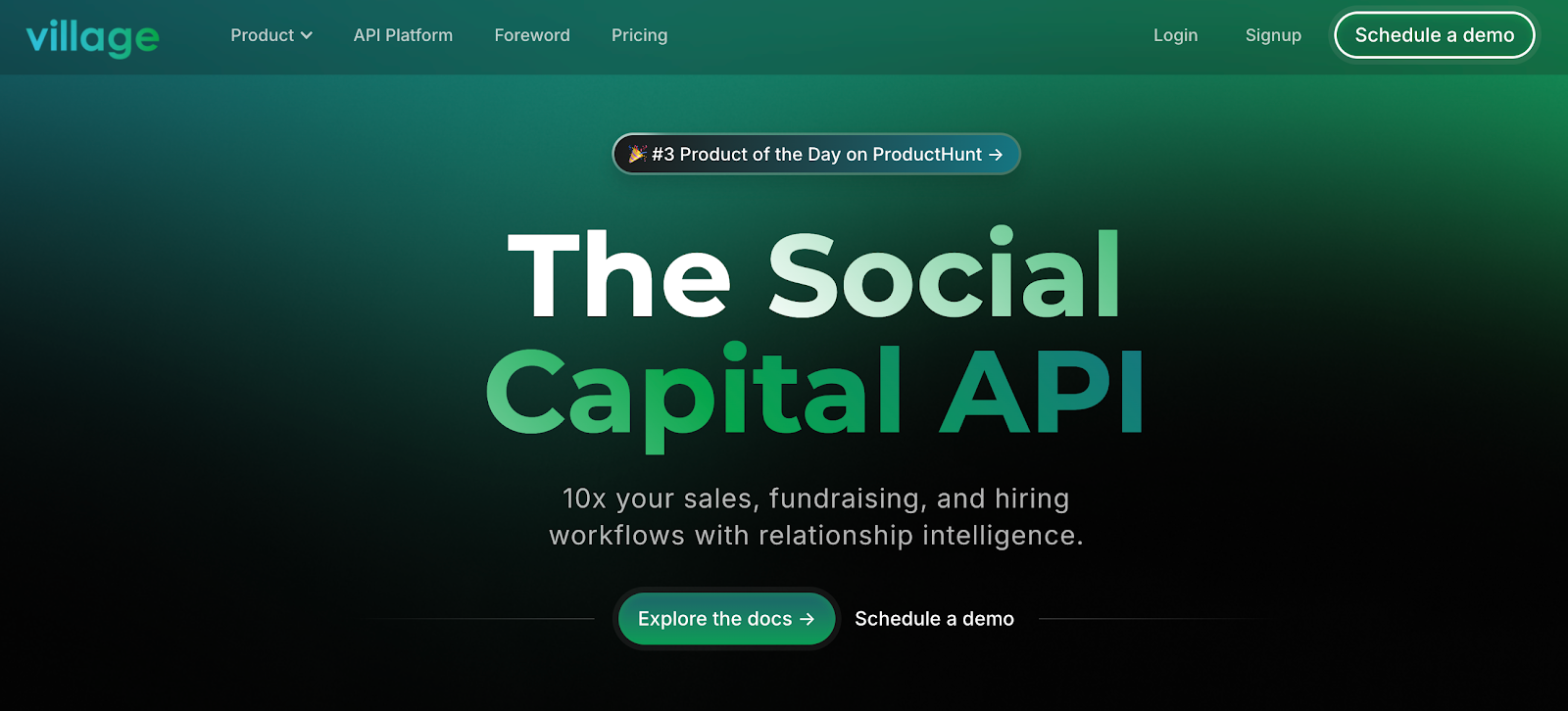Most people wait too long to start networking. They show up when they need a job, a client, or a favor. By then, people can tell you're only reaching out because you want something.
Networking isn’t about collecting contacts or spamming LinkedIn messages. It’s about showing up early, offering value, and being the person others want to stay in touch with.
If your outreach feels random, it probably is. These strategies help you reach people who respond and recommend you to others.
1. Start Early and Build Genuine Connections
You grow a professional network long before you need a referral or a sale. Reach out when curiosity drives the conversation. This habit shows industry professionals that you prioritize building relationships over seeking favors.
Simple daily moves keep you visible without feeling pushy:
- Comment on industry leaders’ posts with thoughtful questions or valuable insights.
- Share short takes on social media platforms about industry trends you follow.
- Reach out after networking events to keep the conversation going.
These touches create a robust network of people who trust you because you showed up early.
2. Offer Value Before You Ask to Connect
People spot a pitch from a mile away. Show genuine interest first, and your professional relationships will grow stronger.
Share something useful the moment you connect. It could be an article that speaks to current industry trends, a quick intro to a colleague, or data you gathered from recent networking activities. These gestures signal that you’re here to exchange ideas, not just collect contacts.
Use value-driven conversation starters like:
- “Saw your post about AI-driven ads. Here’s a dataset we used to improve click-through rates.”
- “This podcast covers the latest developments in privacy laws. Thought it might help your launch timeline.”
Value-first outreach turns cold messages into warm business opportunities and sets the stage for long-term relationships.
3. Be Specific or Get Forgotten
If you introduce yourself with a generic title or a buzzword-filled pitch, you’re giving the other person nothing to work with.
Mention the industry you work in, the clients you help, or the kind of business opportunities you're exploring. The goal is to give someone a reason to stay in the conversation or introduce you to someone else.
Here’s the reality: 80% of B2B buyers base their decisions on how someone communicates their value. That has nothing to do with charisma and everything to do with clarity. The more specific you are, the easier it is for someone to bring you into a future conversation.
4. Join Strategic Communities
Your networking efforts depend on where you show up. If the room is full of people you’ll never talk to again, you’re wasting your time.
Look for communities tied to your industry, your goals, or your stage of work. That could mean professional associations, niche Slack groups, or smaller events built for other entrepreneurs. The best spaces offer advantageous networking opportunities.
Choose rooms where people start conversations, share relevant resources, and build strong relationships. The more specific the group, the easier it is to find new contacts who can help you expand your reach.
You don’t need a massive audience. You need a focused group of people who care about the same outcomes you do. Once you’re in, show up ready with an elevator pitch.
5. Prepare Your Elevator Pitch
If you can’t explain your work clearly, people won’t remember you or refer you. A solid elevator pitch gives someone a reason to keep the conversation going or connect you to someone in their circle.
Keep it short but meaningful. Mention who you help, what you help them do, and why it matters. A good pitch doesn't need to sound impressive. You just have to make your pitch relatable.
Think about your audience. If you’re speaking with other entrepreneurs, use language they understand. If you’re in a group spanning various industries, avoid the jargon and stay focused on the outcome of your work.
Practice out loud so it sounds natural. You don’t need a script. You need to be ready when someone asks, “What do you do?”
Once you’ve nailed your pitch, the next step is making your first interaction count.
6. Make Your First Meetings Memorable and Easy to Follow Up
People don’t remember everyone they meet, but they remember how you followed up. And that follow-up starts in the first few minutes.
According to a survey, 57% of professionals still rely on business cards to kick off new networking contacts. That number tells you something—building relationships takes time, but it often starts with a simple, clear exchange.
Make it easier for people to remember you by offering value right away. A strong first interaction sets the tone for future support, referrals, and new opportunities.
Here are a few ways to leave a remarkable first impression:
- Mention something specific about their work and relate it to your own
- Offer a quick intro to someone who could support their work
- Mention a current project and ask how it connects with their focus
7. Track Your Connections
Your memory will fail long before your network stops expanding. A simple system keeps you organized so you can focus on actively engaging your diverse network.
After each meeting, take a moment to log quick notes. Record where you met, what grabbed their attention, and when you plan to follow up. Tag each contact by industry, location, or the type of opportunity they’re looking for.
You can use a customer relationship management (CRM) tool, a spreadsheet, or even a simple notes app. The tool doesn’t matter as much as the habit. Add a few keywords to help you remember the value they bring to your network, and set reminders so your next message feels timely and thoughtful.
8. Reconnect With People You Already Know
Reach out to old networking contacts with a purpose. Bring up something you worked on together. Share a quick example of a recent project they’d find interesting. Ask what they’re focused on now.
These messages don’t need to be long. They just need to be personal and timely:
- “Saw your name in a thread about hiring. Do you need help finding someone?”
- “I noticed your team launched something new. Would love to hear how it’s going.”
Building relationships takes time, and keeping them alive takes consistency. Reachbacks like these can unlock new referrals, support, or career opportunities without starting from scratch.
Activate Your Network With Village
Opportunities often come from people who already trust you, or from someone willing to introduce you. That kind of trust comes from steady and consistent networking efforts.
The strategies in this guide help you create real connections and build a professional network that opens doors when you’re not in the room. But once your network grows, it gets harder to keep track of who knows whom. That’s where Village comes into play.

Village maps your existing relationships across calendars, emails, contacts, and social media platforms. It surfaces who’s in your circle, how strong those ties are, and who can introduce you to someone you’re trying to meet.
You can:
- View strength scores for each relationship based on activity
- Request double-opt-in introductions directly in the app
- See shared history, work experience, and mutual contacts
- Filter by company, title, location, or team
- Track intro requests and follow-ups using a Kanban-style board
- Export contacts and sync with your CRM for strategic outreach
With Village, your networking activities become visible, organized, and easier to activate. Sign up for free or book a quick demo to explore its features.
FAQs About Business Networking Best Practices
What are the 3 P's for effective networking?
The three P’s are preparation, presence, and persistence. You prepare by knowing who you want to meet and what you want to say. Then, you stay present by actively listening and engaging in the moment. Lastly, you stay persistent by following up and continuing the relationship over time.
What are the seven practical steps for networking?
These are the seven practical steps for networking:
- Set a clear goal for each interaction
- Research the person or group ahead of time
- Open with a concise elevator pitch
- Listen for needs and shared interests
- Offer value before asking for anything
- Follow up with context and next steps
- Maintain regular but lightweight contact
What are the four types of business networks?
There are operational networks that help with your day-to-day work. Strategic networks introduce you to new ideas and future opportunities. Personal networks give support and advice across different stages of your career. Digital networks help you stay connected across social media, forums, and other online platforms.
What are the best practices for networking events?
Before you attend, make a short list of people you want to connect with. During the event, ask open-ended questions that start real conversations. When it’s time to leave, exchange contact info right away and follow up within a day so your name stays fresh in their mind.










